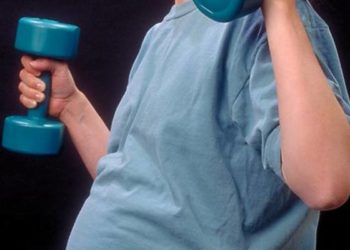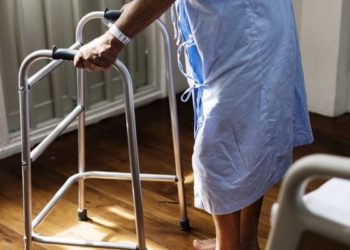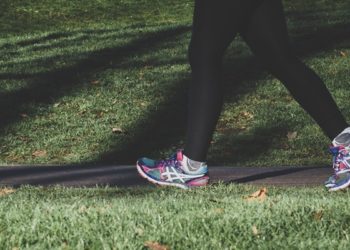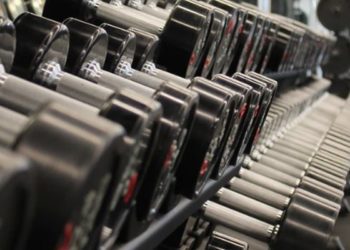Wellness Check: Exercise
At-Home Eccentric Exercises Improve Functional Ability More Than Stretching in Older Women
1. At-home eccentric exercise produced more improvement in muscular peak torque and gait speed than static stretching or dynamic closed-chain stretching.
2. At-home eccentric exercise, static stretching, and dynamic closed-chain stretching all improved hamstring flexibility and passive ankle dorsiflexion.
Evidence Rating Level: 1b
A large detriment of aging is the reduction of functional ability. A proponent of this decrease may be due to loss of muscular functional ability characterized by parameters such as flexibility, musculotendinous stiffness, muscle strength, gait speed, and more. There exist multiple ways to increase functional ability which include eccentric exercise, static stretching, and dynamic closed-chain stretching. Due to variations in risk profiles regarding injury for these different methods, it is important to characterize what parameters of functional ability they each improve. Although data exists for eccentric exercise regarding strength building, there is lacking information concerning improvement in flexibility, especially when employed in an “at-home” manner. The purpose of this randomized control trial was to evaluate the effects of at-home eccentric exercise, static stretching, and dynamic closed-chain stretching on musculoskeletal and functional parameters in older women.
This randomized control trial included 51 older women ages 60-75 who were evaluated with the Physical Activity Readiness Questionnaire and were able to independently ambulate. Individuals were excluded if they had a neuromuscular or skeletal injury in their lower limbs in the last 6 months, if they already partook in regular stretching or exercise, if they were obese, or if they had moderate-severe lower back pain. Individuals were randomly assigned to one of three treatment groups to be completed 3 times a week for 6 weeks: eccentric exercise, static stretching, and dynamic closed-chain stretching. The primary outcome measures included ultrasound-measured musculotendinous length, stiffness, flexibility, and eccentric strength.
All three at-home interventions provided an improvement in hamstring flexibility and knee flexor stiffness with no significant differences between groups. Eccentric torque was used as a measure of muscle strength and only increased in the eccentric exercise group concerning knee flexor and ankle plantar flexor. Furthermore, there was a significant increase in walking speed in the eccentric exercise group. However, based on the difference in nature of these exercises, equalizing the volume of these interventions was subjective, making it challenging to generalize these results. Nonetheless, this study showed that all three exercise interventions, when completed at home, yield beneficial musculoskeletal and functional improvements in older women, especially eccentric exercise.
Vascular Function Improvements Derived From Exercise Are Not Sex-Dependent
1. The exercise training prevented increases in total cholesterol and LDL cholesterol which were observed in the non-exercise group and this positive change was not dependent on sex.
2. Changes in visceral fat and lean fat-free mass in response to exercise were dependent on sex.
Evidence Rating Level: 1b
One of the leading causes of morbidity in older individuals can be attributed to cardiovascular (CV) causes. As such, an emphasis on lifestyle modifications, namely exercise, has been a large part of reducing the incidence of such diseases. Although, we know exercise to be beneficial for reducing CV events, it is uncertain whether this is through the reduction of traditional risk factors (ex. obesity) or through direct arterial function improvement. Furthermore, although there are studies to compare sex differences concerning arterial function in response to exercise, there is a gap in these studies in older individuals. This project aimed to investigate if there exist any sex differences in arterial function response to exercise independent from other CV risk factors.
This was a randomized control trial that included 72 healthy middle-aged/older males and females. These participants were prospectively registered before randomization. Exclusion criteria included having smoked <12 months ago, BMI >40, hypertension, alcohol consumption of >280g/week, and total cholesterol >7.0. Participants were randomized to either: no exercise, walking in water, or land-walking for 50 minutes 3 times a week. The primary outcome measures were cholesterol levels, body composition metrics, and flow-mediated brachial artery dilation.
The results showed that there was a significant increase in LDL cholesterol and total cholesterol/HDL ratios in the non-exercise group whereas this increase was not observed in the water-walking or land-walking groups. There were no significant sex differences in this observed relationship. However, males lost significantly more visceral fat than females while females gained more total lean body mass than males. However, the study had a small number of participants with around ~25 participants in each intervention. This made investigating a variable such as sex more difficult and the results less generalizable. Nonetheless, this study identified that walking as exercise provides vascular benefits and reduces risk factors for CV events independent of sex.
Wearing A Mask During High-Intensity Exercise Did Not Impact Hemodynamics During Exercise
1. In a healthy population, wearing a mask during high-intensity exercise does not change hemodynamic response during exercise.
2. In a healthy population, wearing a mask during high-intensity exercise causes an increase in heart rate during the recovery period after exercise.
Evidence rating level: 1b
The onset of the COVID-19 pandemic was very challenging for countless people. With the mental health challenges that this virus presented, a large proportion of individuals became more sedentary. Exercise opportunities such as sports events were halted due to social distancing regulations. Whether wearing a mask during exercise impacts athletic or hemodynamic function remains controversial. This relationship has especially been understudied during the recovery period post-exercise. Thus, this study aimed to assess the effect of different face masks on hemodynamic markers during high-intensity exercise and the post-exercise recovery period.
In this randomized control trial, 10 participants were included; 5 males and 5 females. The inclusion criteria were individuals bet 18-30 years old. Exclusion criteria included if patients were current smokers or if they had pulmonary, cardiovascular, metabolic, or renal disease. Participants were asked to complete 4 exercise conditions and 2 control conditions while wearing different face masks. The primary outcome measures were of cardiac output, systemic vascular resistance, and blood pressure measured before, during, and after exercise.
The results showed that there were no significant differences in cardiac output, systemic vascular resistance, heart rate, and brachial pressures between exercise with or without a mask. Furthermore, individuals wearing masks (surgical or cloth) had higher post-exercise heart rates than individuals who did not wear a mask during exercise. However, this study was completed only on young individuals, making generalizing these results to older populations difficult. Nonetheless, this study provided some insight that mask-wearing does significantly impact hemodynamics during exercise.
Image: PD
©2024 2 Minute Medicine, Inc. All rights reserved. No works may be reproduced without expressed written consent from 2 Minute Medicine, Inc. Inquire about licensing here. No article should be construed as medical advice and is not intended as such by the authors or by 2 Minute Medicine, Inc.







